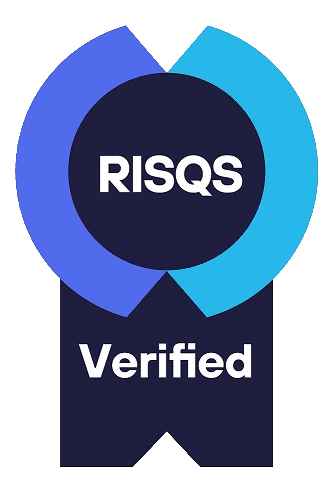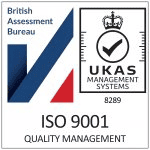

The European Union has mandated moving towards interoperable railways to lower boundaries for cross-EU running of trains. European directives have been translated into UK law via the production of a Statutory Instrument, The Railways (Interoperability) Regulations 2011 came into force on the 16th January 2012.
The RIR provide for the use of EU Assessment and Authorisation processes on the conventional and high speed parts of UK infrastructure which are not specifically excluded from the RIR thus, the vast majority of the UK mainline railway is subject to the RIR and will increasingly fall under the European Standards know as Technical Standards for Interoperability (TSIs).
Projects proceeding under the RIR are subjected to Notified National Technical Rules. An assessment against these NNTRs by a Designated Body will still be required and this can be carried out in a similar manner to that employed under ROGS. The ORR Guidance suggests that where Interoperability Standards (i.e. TSIs) are mandated, the RIR take precedence over ROGS.
The North West Electrification Programme (NWEP) will see systems installed on the infrastructure that are currently in service on other parts of the network and also systems that will be installed for the first time, i.e. Series II OLE.
Lines to be electrified as part of project include:
The scope of work carried out includes;
Delivery of project scope is set in the following phases:
Series 2 was initially developed for the North West Electrification Programme for line speeds up to 100mph. Essentially the design is a development of the existing Mark 3D OLE, incorporating best practices from European railways, introducing several technological innovations and developing components and assemblies in recognition of reliability and performance limiting aspects of current OLE system within the UK. The Series 2 design complies with the requirements of the Conventional TSI.
During the design development process there was a conscientious effort to focus on the quality of OLE products, specifically the security and reliability of wiring assemblies. This has resulted in a more robust and reliable system which has a reduced whole life cost compared to legacy OLE systems. The design has also improved construction efficiency, reduced the complexity and required frequency of maintenance intervention by simplifying and standardising assemblies and arrangements.
The introduction of Series 2 OLE is supported by a Generic Application Safety Case (GASC) and associated Hazard Log/SRAC list. The GASC is supported by specific Application Safety Cases for each implementation of the Series 2 equipment, has taken into account specific local requirements of each implementation area.
The GASC recognises that the Series 2 OLE has evolved via incorporating European best practice and with cognisance to Technical Standards for Interoperability. Furthermore, document states that design and testing has been carried out in-line with TSI requirements and that a NoBo will be appointed in order to assess interoperability.
The requirement for Interoperability/TSI requirement has therefore been built-in to the project from the design stage, which should help to de-risk the project with regards to RIR compliance. On the basis the project was anticipating using a NoBo assessment to gain RIR authorisation.
The GASC states that Series 2 has been designed to be compliant with TSIs. It would be
expected that evidence of this to be available e.g. an assessment of Series 2 design against
the relevant TSIs.
It was noted at the time that the processes for which Type Authorisation given were
immature. Vertex suggested that the project liaised with the ORR in order to establish a
common position in the manner in which this can be progressed. It was also highlighted that
the option for Type approval will not be allowed by ORR.
To assist in understanding it’s compliance, a gap analysis was undertake of series 2 design
against the following TSI’s:
In addition, the following Group Standards were also considered to help understand if the
TSI requirements have been incorporated:
The following project documentation were provided to allow the review to take place. It must also be noted that at the time of review, the project was yet to complete a detailed design:
Additionally, the following permanent special provisions permitted for UK rail network were also considered as part of the assessment:
Sub system Energy TSI, Section 7 Implementation
The review findings were then inputted into a simple spreadsheet created by Vertex that included the following information to provide a clear picture of where the design was compliant or not against each TSI requirement:
It was found at the time that a number of parameters were not able to assess for compliance due to the detailed design not being completed however it was recommended against each of these clauses that the project do take consideration during the development through the Interdisciplinary Design checks and reviews to ensure compliance.
One non-compliance was identified by the analysis. The TSI parameter 4.2.17 states that the overhead contact line shall be designed for a minimum of two pantographs operating adjacently having a minimum spacing centre line of the pantograph head as set out in TSI table 4.2.17.
It is permissible for more than one pantograph to be simultaneously in contact with the overhead contact line equipment. The number of pantographs and their spacing shall be designed taking into consideration the requirements of current collection performance.
The evidence provided stated that the NWEP/series 2 OLE will allow operation of EMU vehicles at line speeds up to 176 km/h/110 mph, with up to 3 pantographs raised, with distances between pantographs of 75m or greater provided these vehicles are fitted with newer pantograph types with lightweight heads.
The conclusion and recommendation was that GEGN8600 provides guidance on compliance to Energy sub-system TSI. This states that minimum distance is 85mt as a requirement and is a potential non-compliance. It was recommended to the project that this will require further investigation by the project to confirm compliance to TSI.
The recommendations were considered, carried forward and encouraged project, National Certification Body (NCB) and Office of Rail Regulation (ORR) to work in collaboration to address non-compliance and allowed Entry into Service for phase 1 on time.
It has also acted as a lessons learnt for all parties and has provided a better understanding with respect to TSI interoperability.
As an outcome of the analysis and lessons learnt by the project, each phase of the project (which has now become part of the Northern Hub programme), a project interface manager has been appointed to manage the following tasks:
The same Process can be applied for various requirements. This ranges from understanding TSI compliance for a specific project up to compliance of company standards or specifications.
In summary it can provide the following: